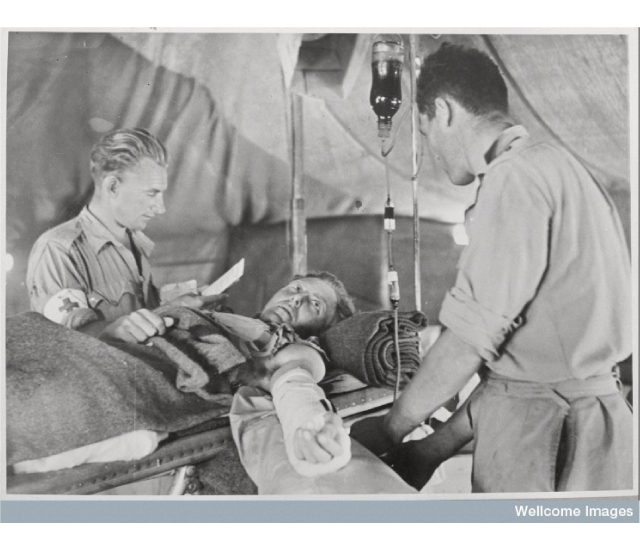Did you know that modern blood transfusions and blood banks were pioneered during the First World War?
The transfusion of blood from one individual to another was a known medical procedure since the 17th century, with many of the earliest tests involving the transfer of animal blood into a human. However, the transfusion of large amounts of human blood was viewed by many medical practitioners as a dangerously risky procedure with few benefits.
Medical advances at the beginning of the 20th century began to lay the groundwork for blood transfusions to become standardised. The different blood types were identified in 1900 by Karl Landsteiner, and Ludvig Hekoten built upon this discovery by showing how it was important to match those blood groups during medical treatment.
The biggest step forward in the field, however, came in 1914 with the discovery that sodium citrate was effective as an anticoagulant to stop blood from clotting. Jay Mclean discovered heparin, a much better anticoagulant, in 1916. Heparin is still used for this purpose today.
Meanwhile, the fighting during the First World War was taking a terrible toll on the wounded and many men were dying when they might have been saved with the right medical procedures or treatment. Captain Oswald Hope Robinson, a US Army Medical Officer, brought these developments together to begin the practice of widescale blood transfusions. He repeatedly showed the huge medical benefits of using stored blood of different types and then using them on matching patients. He also drastically changed the model of blood donating and transfusion at the time.
Previously, blood was taken freshly from a donor and transferred almost immediately to the patient. Robinson showed that in order to save both lives and time it was far better to have stored blood ready for immediate use. Whilst this approach was only largely seen in the military until the 1930s these ‘blood banks’ eventually spread into civilian life as well and are now a staple in medical facilities around the world.
The work of Captain Robinson, and those who came before him, in treating patients during the First World War are responsible for the lives of millions who rely upon blood donation and transfusions every day.
Image courtesy of the Wellcome Image Library
Sources
Medical Contributions of The Great War: Blood Transfusion








